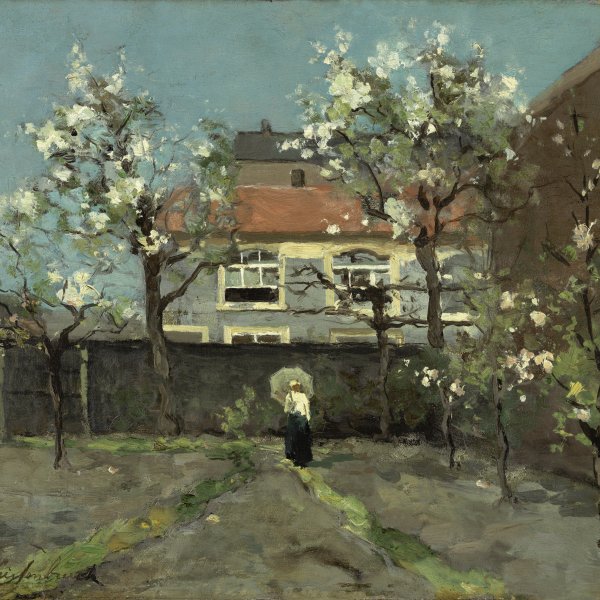Jan Hendrik Weissenbruch
Jan Hendrik Weissenbruch, whose Christian name was Hendrik Johannes, was born into a family of artists of which he and his cousin Jan (1822-1880) were the main representatives. In order to distinguish him from his cousin, who was almost the same age and painted with a plain technique and brilliant colours-above all city landscapes-Jan Hendrik was also known as "de vrolijke Weiss" (a play on words that means "the cheerful melody").
At the beginning of his career, Weissenbruch received drawing classes from Johannes Low for three years. Later on he was trained by scenery painter Bart van Hove (1790-1880) and attended night classes at the Academy of the Hague. In 1849, two years after Weissenbruch staged his first exhibition, the Teylers Museum in Haarlem acquired one of his panoramic landscapes. However, that early success did not last very long. In spite of the prestige he had earned among his colleagues, he did not achieve public acknowledgement until the late 1880s.
During this intermediate period, Weissenbruch went from being a characteristic painter of Dutch Romanticism to one of the best representatives of the Hague School. His lively dune landscapes led to a series of atmospheric impressions of the Dutch polders, in which the artist paid special attention to his representation of the cloudy skies and stretches of water. These beautiful oil and watercolour landscapes were painted, almost without exception, with free and delicate brushstrokes.
The artist found his inspiration in the surroundings of the city in which he resided, the Hague, and in Haarlem. Over the years he extended the focus of his work to Gouda, Boskoop, Delft and Schiedam. After 1875, Weissenbruch regularly returned to the wet landscapes found in the areas surrounding Nieuwkoop and Noorden. He only travelled abroad once. In the company of his friend, the art-dealer J. Slagmulder, he visited the Exposition Universelle in Paris in the year 1900 and he undertook an excursion to Barbizon, where he painted, among other subjects, Millet's house.
Weissenbruch taught Theophile de Bock (1851-1904), Victor Bauffe (1849-1921) and Jan Heppener (1826-1898).
Marjan van Heteren

